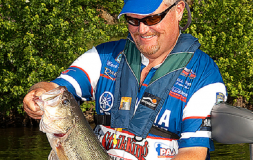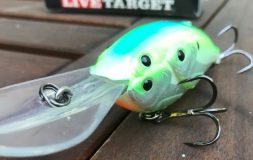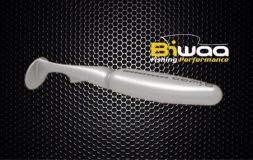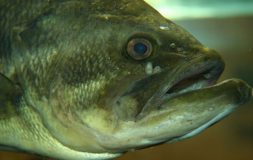Learning how to catch deep water bass
Written by Andrew Schadegg
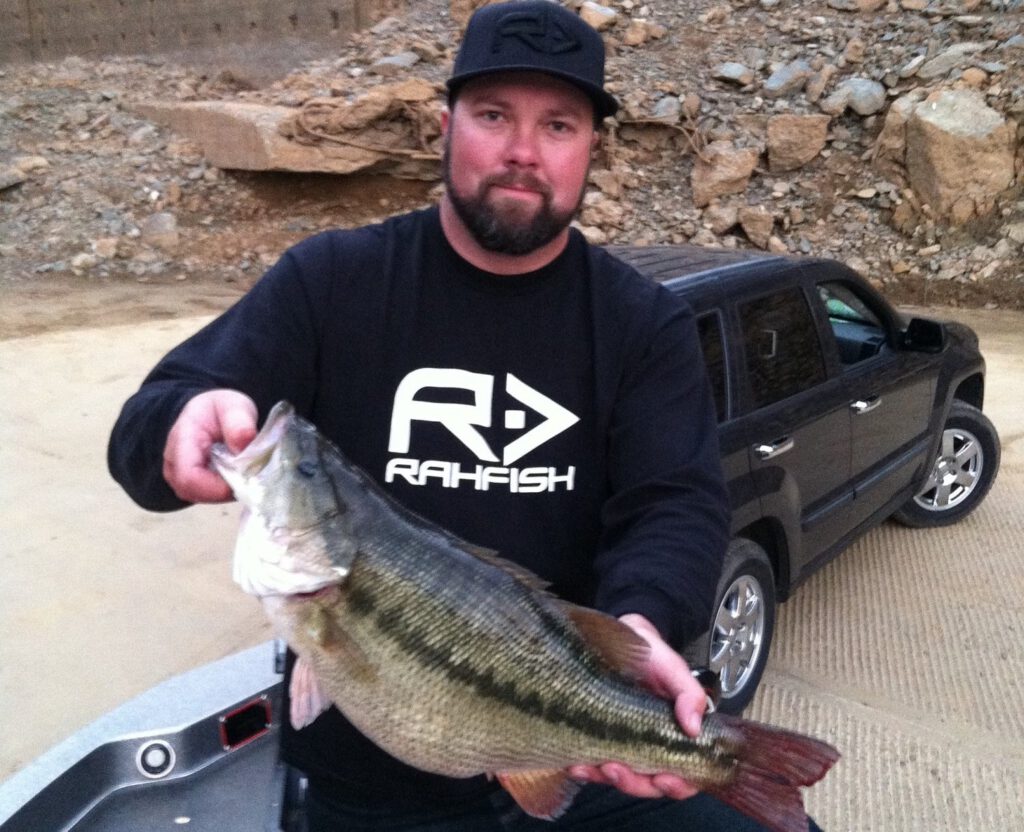
The cold, menacing deep. The dark abyss of the lake.
It’s a place that strikes fear in the hearts of many anglers from North Carolina to California. Fishing deep is intimidating. When you can go down the bank in 5 feet of water and target things you can see, like docks, trees and weeds, you feel like you have more control. It’s easier to fish things that are right in front of you. When you’re out in the middle of nowhere and you’re targeting stuff you can’t look right at or can only see on a graph, it feels like you’re less likely to get a bite.
In this article we want to take some fear out of deep water fishing.
Bass spend a lot of time out deep, especially in the warmest and coldest months of the year. They’re searching for the optimal water temperature and oxygen levels so that they can be the most comfortable. Let’s find out what you need to know to catch bass that are lurking out deep.
Pay Attention to the Shoreline
Back in the old days of bass fishing, before technology took over and made finding offshore spots easier to find, the best deep water anglers would triangulate spots on the shore to figure out where to fish. They’d do this by using traditional lake maps and by paying attention to how the topography on the shoreline would look underwater.
If you see a long, slopping point that comes out into the water that has a gradual drop, it’s a good bet that it’s going to continue that way as it goes deeper into the water. Spend some time getting to know how the bottom feels with something like a heavy football head jig. Keep contact with the bottom and work the top of the point, the sides and work the jig from shallow to deep and also from deep to shallow. This is a great way to find how the bass are positioning and often you can come across a school.
Steep cliffs and drop offs can be another great starting spot for fishing deep. You can easily fish a drop shot straight down to find the depth. Bass like vertical walls, as they are a great place to trap schools of baitfish or find craws hiding in the holes. During the months that they go deeper, bass like easy access to bait, in places they can move up and down without expending a ton of energy.
Pay close attention to the type of bottom that is on the shore. Are there big rocks, small pebbles, sand? Does the shoreline transition from muddy bank to rocky shoreline? These types of details can help you identify what is going on under the water. Transition banks can be an excellent gathering place for bass to hold. Search the bottom with a crankbait or swimbait, something that can be fished quickly. When you catch a fish, make a few more casts and then slow down with a finesse bait like a jig or worm.
Dedicate Yourself to Deep Water
The best way to gain confidence fishing in deeper water is to force yourself to spend time gaining experience. When you head to the water on a summer day, commit to doing nothing but fishing deep. Don’t be tempted by the shallows. The more time you spend on it, the more confidence you’ll have. Once you catch a few fish, it won’t seem as daunting and will get more and more comfortable.
Pay really close attention to every fish you catch. Where are you? How deep was the fish you caught? What does the shoreline look like? What time of day? All of these things will help you create a picture of the conditions and make it easier to determine where and how to fish the next time you’re on the water.
Experiment with different techniques that maybe you haven’t tried before. Drag a Carolina rig or fish a vertical spoon. Things that are typical deep water techniques that you won’t normally use up in the shallows. Figure out the little details about these approaches by watching videos and reading articles. Keep fishing these new baits until you’re comfortable.
Practice Makes Perfect
A few years back a new deep water technique started being talked about online and in the fishing magazines. It was a Japanese technique that had found its way to the US called spybaiting. By now, you’ve probably heard about it and maybe even tried it. Many anglers avoided it, because of the fact that it required light line and a very slow retrieve. It’s a small, weighted prop bait, the most popular on the market being the DUO Realis Spinbait.
You cast it out and count it down to the depth that you want and then slowly retrieve it back to you. I determined to learn this new technique to fish for deep spotted bass on some of the big reservoirs in Northern California that were pumping out some giant spots. Lots of guys exclusively fished drop shots and shaky heads in 40 to as deep as 70 or 80 feet to catch these giant spots.
I got comfortable with the technique by fishing for smallmouth in 15-20 feet and when I went to the lake, I would only bring three spinning rods. One with 4 pound test, one with 6 and one with 8. This was to identify whether the difference in line size made any change to my catch-rate and to really dial in this new approach. After fishing it a few outings and not catching anything, I finally figured out how to fish it.
I took what I’d learned in those practice sessions to the spotted bass lakes and immediately started having success. It was something that these deep water bass had never seen before. They’d been pressured with lots of other approaches, but when they were suspending in deep water, spybaiting was just the thing to get them to bite. Over one productive winter/spring, I caught seven spotted bass over 6 pounds with an 8.2 being the biggest.
If you commit to practice, have some determination and a little extra time in the deep water, you can be catching fish offshore with consistency. Don’t be intimidated. It might take some time, but you can do it and do it with a lot of success.





